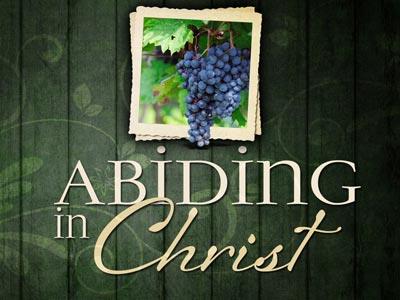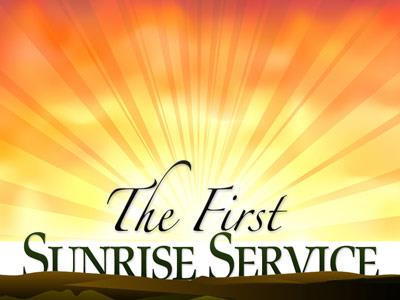-
Discipleship In The Original Jewish Context: Elijah, Elisha, And Jesus
Contributed by Ed Vasicek on Jan 8, 2025 (message contributor)
Summary: Today we are going to look at Elijah and Elisha and note their potential influence upon the life and ministry of Jesus.
Discipleship in the Original Jewish Context: Elijah, Elisha, and Jesus
Parallels between Jesus’ ministry and that of Elijah/Elisha
(I Kings 19:1-9, 15-16 compared with Matthew 4:1-11)
When Protestants have visions, they usually have visions of Jesus. When Roman Catholics have visions, they often have visions of Mary. And when Jews have visions, they typically have visions of Elijah. He is a central figure among devout Jews.
Today we are going to look at Elijah and Elisha and note their potential influence upon the life and ministry of Jesus.
Yeshua (like other rabbis) used the relationship between Elijah and Elisha as a model for the relationship of rabbi to disciple. But we can take things a step further and note how Jesus’ ministry resembled the ministry of Elijah and Elisha (on steroids) in some ways. Yeshua (Jesus) may have used their example to set His own direction of ministry. Even events within the life of Yeshua appear to follow the Elijah/Elisha pattern.
Main idea: To better understand New Testament discipleship, we need to delve into discipleship's Old Testament roots.
I. Take Christ's preparation for ministry. Although Jesus’ preparation for ministry and Elijah’s preparation to anoint Elisha differ greatly, the similarities are worth consideration.
A. Read with me Matthew 4:1-11, the text about Jesus temptation in the wilderness.
B. Now read with me the text of I Kings 19:1-9, 15-16 and note the similarities.
And he lay down and slept under a broom tree. And behold, an angel touched him and said to him, “Arise and eat.” And he looked, and behold, there was at his head a cake baked on hot stones and a jar of water. And he ate and drank and lay down again. And the angel of the Lord came again a second time and touched him and said, “Arise and eat, for the journey is too great for you.” And he arose and ate and drank, and went in the strength of that food forty days and forty nights to Horeb, the mount of God.
There he came to a cave and lodged in it. And behold, the word of the Lord came to him, and he said to him, “What are you doing here, Elijah?”
Both Yeshua and Elijah were tempted in the wilderness. Elijah was tempted with despair (and surrendered to the temptation) while Christ was tempted by the devil on three occasions (Matthew 4:1-11) and prevailed. Both fasted for forty days and nights. In I Kings 8:8, God feeds Elijah with bread and water, and then Elijah travels for forty days until he reaches Horeb (Mount Sinai), presumably in Saudi Arabia.1 There he meets with God and hears his voice. He also receives his directions from God.
C. Jesus’ sequence was reversed. First, He is baptized by John and then tempted in the wilderness. At His baptism, He “meets” the Father and the Spirit. The Father speaks from heaven, and the Spirit anoints and empowers Yeshua for His ministry. Although not in exact sequence, the similarities in concept seem striking. His forty-day temptation in the wilderness was probably a time of waiting upon the Father and being instructed about and prepared for his ministry via the Spirit.2
D. How did the Spirit lead Jesus into the wilderness? We know that, at the incarnation, the Son laid aside the use of His divine prerogatives as God (Philippians 2:4-11, the “kenosis” [“emptying”] passage); He probably learned about the will of the Father primarily through the study of Scripture. This is implied in the childhood narrative when Jesus discussed theology with the Rabbis, probably in preparation for His Bar Mitzvah (Luke 2:41-51). The possibility exists, therefore, that the Spirit first led Him through the study of Scripture and then “... drove him out into the wilderness” (Mark 1:12). The word Mark uses is forceful. Even during the kenosis, the relationship between Father, Son, and Spirit was vibrant and unique.
II. Parallel Miracles
A. The miracles Elijah and Elisha performed also presage Yeshua’s miracles.
Elijah’s miracles recorded in I Kings include control of the weather (17:1) and resurrecting the dead (17:22). Elisha’s miracles recorded in 2 Kings include resurrecting the dead (4:34), multiplying loaves of bread (4:42-44)3, and healing a man plagued with leprosy (5:27).
B. Yeshua's miracles are like Elijah's on steroids.
Jesus’ miracles are best interpreted against the backdrop of the aforementioned miracles. Not only is Yeshua “greater than Solomon” (Matthew 12:42), He is greater than Elijah and Elisha combined. Although we think of Elijah as the Messiah’s forerunner (Malachi 4:5-6), both Elijah and Elisha foreshadowed Jesus.
III. Parallel Service
A. Serving was central.
The rabbis understood the importance of serving as a primary duty of the disciple, particularly serving his rabbi. Jesus expanded the concept when He spoke about being “servant of all” (Mark 9:35b). He Himself, “came not to be served but to serve, and to give his life as a ransom for many,” (Matthew 20:28). Although this was His primary purpose, He gladly received acts of service from His disciples and had no hesitation to request service from them; they made arrangements, procured food supplies, distributed gifts to the poor, even brought Jesus a donkey (Matthew 21:1-3). Yeshua served and His disciples served. Serving was at the heart of discipleship.

 Sermon Central
Sermon Central



